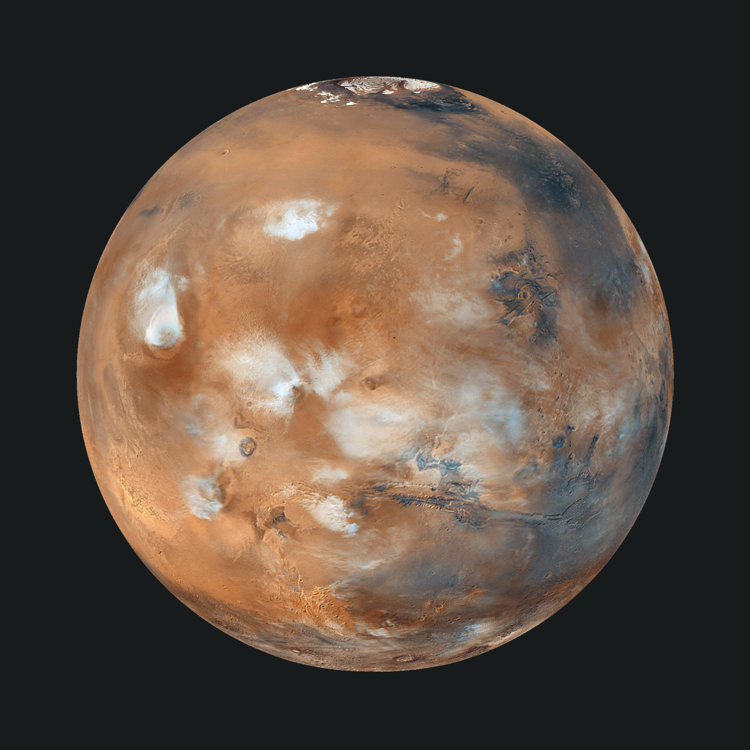The Martian Lake
Monday, September 10th, 2018September 10, 2018
One planet in our solar system might be a little wetter than we previously thought. A team of Italian scientists recently found evidence that a lake of liquid water most likely exists on Mars, buried deep beneath the planet’s southern polar ice cap. The team published its findings on July 25, 2018, in the journal Science.

Italian scientists recently found evidence of what they believe to be a liquid water lake beneath the southern polar ice cap of Mars, the fourth planet from the sun. Credit: NASA/JPL/Malin Space Science Systems
Mars is a very cold place. On average, the surface of the planet is about -80 °F (-60 °C). As on Earth, however, the poles are even colder. Both poles of Mars feature permanent caps of water ice that are more than 1 mile (1.6 kilometers) thick. In addition, the southern cap has a roughly 25-foot (8-meter) thick permanent covering of frozen carbon dioxide. The northern cap has a diameter of about 625 miles (1,000 kilometers), and the southern cap has a diameter of about 220 miles (350 kilometers). In the Martian winter, the caps expand as layers of carbon dioxide frost condense from the atmosphere.

Images such as this one, showing curved depressions in Mars’s Utopia Planitia region, prompted the search for subterranean water with ground-penetrating radar. Credit: NASA/JPL-Caltech/Univ. of Arizona
The team of scientists analyzed data from the Mars Advanced Radar for Subsurface and Ionospheric Sounding (MARSIS), an instrument aboard the European Space Agency (ESA) probe Mars Express. Mars Express has been studying the surface of Mars since 2004. MARSIS is a ground-penetrating radar device. Ground-penetrating radar can detect underground features and objects beneath rock and ice. The radar waves reflect off liquid water, however, and for years MARSIS has returned many images with this tell-tale reflection beneath the planet’s south pole. At last, after ruling out other possibilities, the scientists concluded that the radar had found a triangular lake basin about 12 miles (19 kilometers) wide and 1 mile (1.6 kilometers) deep.
The Martian lake might be similar to Lake Vostok and other subglacial lakes on Earth. Lake Vostok, the largest lake in Antarctica, lies beneath 2.5 miles (4 kilometers) of ice, has been isolated for 35 million years, and has temperatures below the normal freezing point of water. But life still likely exists there. If life exists on Mars, it could likely be found in such subglacial lakes. The odds of finding life there are still long, however. The Martian lake would be dozens of degrees below the normal freezing point of water and filled with salts toxic to life on Earth.
As scientists pinch and probe Mars for life, they are also eager to search for life beneath other planetary ice in our solar system. Europa and Enceladus, moons of Jupiter and Saturn, have warm oceans beneath their icy exteriors, and present the best possible chances for extraterrestrial life. The search for life will involve drilling through ice, however, an incredibly complex task even here on Earth. Engineers will have to design a remotely operated drilling system that can withstand the stresses of launch, spaceflight, and landing; drill through massive layers of ice using only batteries or nuclear power; and capture, analyze, and return data to Earth—quite a list! The testing for such a drilling system will begin on our own planet’s subglacial lakes.



